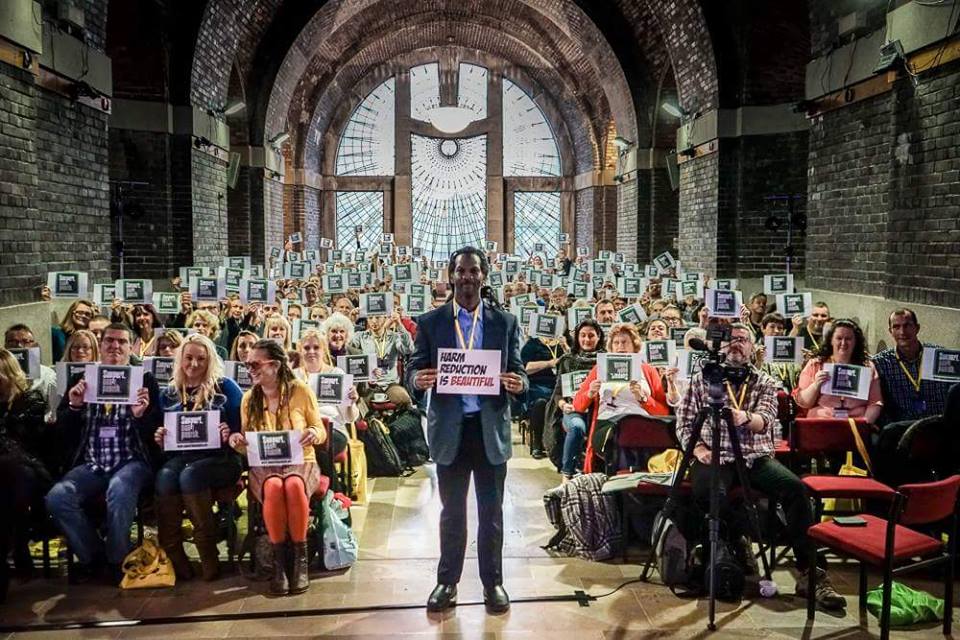By Priya Shetty
To say that Carl Hart is not your average neuroscientist would be quite the understatement. After serving in the US Air Force, he has built a career at New York’s Columbia University investigating the behavioural and neuropharmacological effects of psychoactive drugs in human beings.
But his backstory is unlike that of many academics. Growing up in Miami, with parents constantly at odds, he used illegal drugs such as marijuana and cocaine, shoplifted regularly, and at one point, drove around with a rifle in his car boot.
Narcotics, and the jail that inevitably followed, would later destroy the lives of many of his peers. Hart, meanwhile, was never an addict and instead he excelled at sports.
It is tempting to suggest that he escaped a disastrous fate by “just saying no”, knuckling down, and working hard. But as his recent book, High Price, part-memoir, part- scientific advocacy, makes clear, real life is a lot messier than that.
The book distills much of what Hart has learned about illegal drugs from his own experiences as a teenager and the rigorous experiments he has undertaken as a scientist. His conclusion is that US drug policy, like that in the rest of the world, “is based on assumption and anecdote, but rarely on scientific evidence”.
As Hart tells it, his journey from street kid to Professor of Psychology in Columbia’s Departments of Psychology and Psychiatry was the result of a string of serendipitous moments.
- At high school, he did a military entrance exam just to get out of class early.
- Then when he was accepted into the Air Force, he began studying a degree in psychology at the University of Maryland because he thought psychology might help him understand women.
Slowly, academia took hold, in large part, he says, because of crucial mentors such as Charles Ksir, psychology professor and Hart’s former PhD supervisor at the University of Wyoming, and Robert Hakan, his undergraduate neuroscience professor at the University of North Carolina Wilmington.
Hart never intended to challenge the ideology around substance misuse—when he started studying the effects of drugs like cocaine, under the supervision of Hakan, he admits that he too had preconceptions about drug use, believing that drugs such as crack cocaine had torn apart poor African- American families just like his.
Two things changed his mind.
- Reading about the statistics on the demography of drug use revealed the chasm between what policy makers and the media say about drugs.
- The reality of drug users. In 2004, for instance, in the USA 11•1% of teenagers using illicit drugs were white, compared with only 9•3% of black teens. What’s more, says Hart, “the neurobiological effects of drugs have also been greatly misunderstood, in part, because even some scientists in this area draw sweeping, unwarranted conclusions from limited data”.
After postdoctoral work at the University of California, San Francisco and Yale University, Hart arrived at Columbia University in 1998. The next year he began studying the behavior of crack cocaine users, and found that some addicts would refuse drugs if offered a cash alternative, busting the myth that they would do anything to use the drug.
Nor did any of the cocaine users become violent, despite heavy political messages about drug use and increases in inner-city violence. “Dr Hart has provided the scientific community with actual laboratory evidence of what happens when people smoke crack cocaine or methamphetamine. The contrast between his findings and the portrayal of these drugs in popular media has compelled him to begin a more public effort to disseminate his results”, says Ksir.
Hart’s book unpicks some of the reasons for this disconnect between fact and fiction. As a society, he suggests, both the media and the medical profession have “changed the definition of addiction”, by medicalizing overconsumption so that more people fit the definition of an “addict” and can therefore be “treated”. “Yet addiction itself is so uninteresting because you are only talking about a small number of people who are pathologically addicted. We need to fix the other domains of life rather than just focus on the drug”, he says.
Rather than drugs causing social breakdown, Hart argues, these negative factors enable drug addiction. “Fix broken societies”, he says, “and you would fix most of the world’s drug problems”.
Instead of doing this “politicians have essentially used drugs as a scapegoat to dodge their responsibilities to social improvement”, contends Hart.
“If you have the simplistic view that drugs are the problem, you don’t have to think anymore. You don’t have to think about racial segregation, or certain groups being unfairly targeted.”
Scientists are complicit too, says Hart, citing an example of a NIH grant review committee he was a member of from 2006 to 2010 in which some researchers took it as a given that any use of drugs such as methamphetamine is destructive. Hart points out that drugs such as cocaine and ecstasy are also often studied at such high doses that “it’s inevitable you’d see toxicity, in the same way that you’d see toxicity if you studied people on extremely high doses of alcohol or nicotine”.
This mythology finds its way into drug education too. Trying to terrify young people into thinking that any drug use is lethal is problematic, he says, if they try drugs and “realize that in most cases, they don’t become addicted or have any serious side-effects”.
Hart is not advising downplaying the potentially lethal effects of drugs, but says that “we educate people about how to use alcohol, and that’s a drug, so really, we should just be more honest about illegal drugs”.
Original post appears in The Lancet Medical Journal
